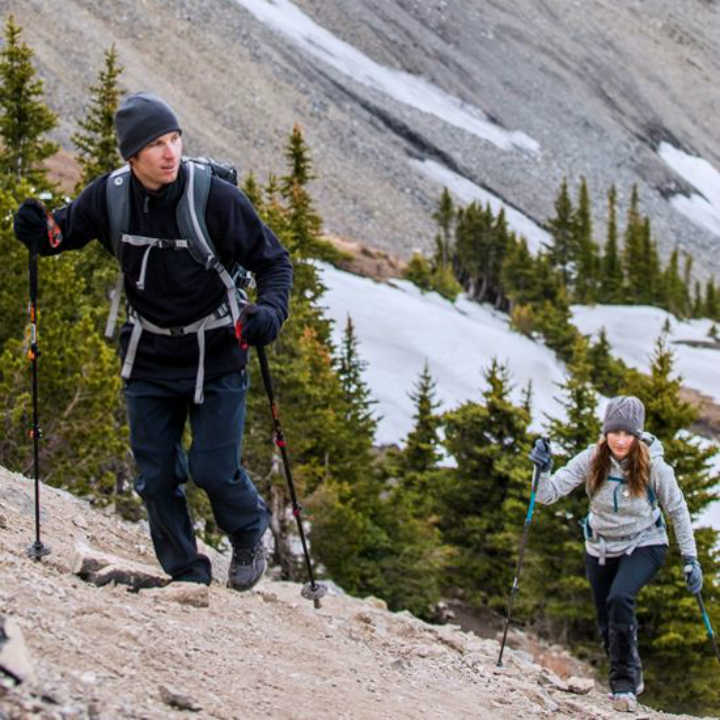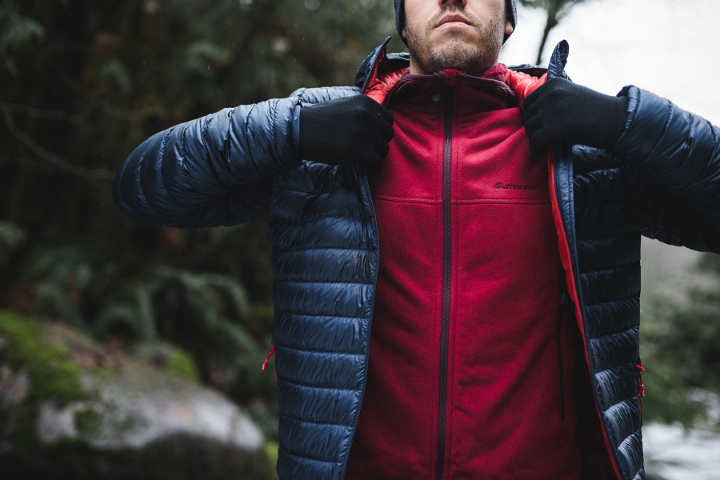Any experienced hiker will tell you that there’s no such thing as bad weather, only inadequate clothing. Being comfortable on the trail is one of the most important aspects when hiking. Unfortunately, many beginners get hiking apparel that’s not appropriate for the type of climate and weather they hike in, and end up getting completely soaked from rain, or too sweaty.
One of the best ways to ensure you’re dressed for the occasion is by wearing multiple layers that protect you from the weather, and also come with convenient properties, such as moisture-wicking, insulation, etc. Besides layering, there are a few other things you should pay attention to when buying suitable hiking apparel, such as:
- Anticipating weather conditions – your protection and health is greatly dependent on what you pack, and your vehicle may be many kilometres away. Forecasts can be wrong, so make sure you’re ready for conditions to turn wetter, cooler, hotter or snowier than anticipated.
- Focus on function instead of fashion – nobody looks good when they’re miserable.
- Consider durability, weight, comfort and price – buying hiking apparel oftentimes involves some tradeoffs, so make up your mind in terms of preference and budget before you start shopping. Extremely lightweight is a great choice, but you’ll also end up with a considerably lighter wallet.
- Don’t compromise on footwear quality – the most important piece of hiking equipment are your shoes. You want them to be as comfortable and adequate for the trail you’re trying to conquer as possible.
You want to avoid cotton tees and denim jeans, as cotton holds onto water, keeping you sweaty and chilly in hot and cold temperatures, respectively. Nylon, merino wool and polyester underlayers are highly recommended, as they dry fast and move sweat off the skin. So, you should look for tees, briefs, socks, underwear and sports bras made from these materials.

Since trails are filled with twists and turns, you’ll need to keep all the dexterity in your legs, so comfortable and sturdy pants are an absolute must. Boulders and branches can shred thin yoga pants or stretchy tights, so women should avoid wearing them. As for a top, you’ll want a warm jacket with polyester fill or water-resistant down insulation. Polyester fleece garments are also great for this purpose, and they’re a smart choice for hiking in colder conditions.
If you’re anticipating a lot of rain, you’ll want a rain jacket that’s waterproof and breathable. Such jackets block wind and rain, while allowing sweat to evaporate without feeling like you’re trapped in a plastic bag. Rain pants are also highly recommended for rainy weather. As briefly aforementioned, you want apparel that has moisture-wicking and insulating properties, is waterproof, windproof, breathable and provides sun protection.
Wicking is crucial in base layers, or any piece of clothing that directly touches your skin. This refers to the fabric’s ability to pull away sweat and moisture away from your body, and move it to the fabric’s outer surface where it quickly dries. This ensures you can break a sweat without feeling chilled or clammy.
Insulation is crucial in your mid-layers, as it ensures you stay warm in any type of weather. While your clothing doesn’t directly generate heat, its insulation properties are what ensures it holds the heat that comes from your body.
Windproof and waterproof properties are crucial in outer layers, as they keep the elements from saturating your clothing with rain, or chilling you when your body heat is whisked away from the wind. Jackets that are labeled as wind and water-resistant don’t block wind and rain completely, but they do offer decent enough protection. Those labeled waterproof, however, provide complete protection, and most of the time they’re also windproof as well.

Breathability is important in all of your layers, as it helps your wicking layer dry quicker. When your layers don’t breathe collectively, the perspiration that’s wicked off your skin will dry inefficiently, and you’ll end up getting soaked by sweat. High-end clothing is both waterproof and breathable. However, even the most advanced shell technologies prioritise blocking rain and wind, so you might struggle when exertion and humidity levels are high.
Then, clothing that has a UPF (ultraviolet protection factor) rating will help protect you against the sun’s UV rays. This is important when hiking in warm climates. Even if it’s not hot, the sun still shines its rays, and they’ll get to you unless you wear UPF clothing and apply a layer of cream with SPF.
Lastly, keep in mind that some trails present unique challenges, so it’s always worth to do your own due diligence before you attempt to conquer it. For instance, if you’re hiking through deep, dark forests or brushy woodlands, you can expect a lot of mosquitoes, ticks, and many other pests. In that case, you’ll want bug-protective clothing, such as long-sleeved shirts and long pants, and clothing with built-in insect repellent.